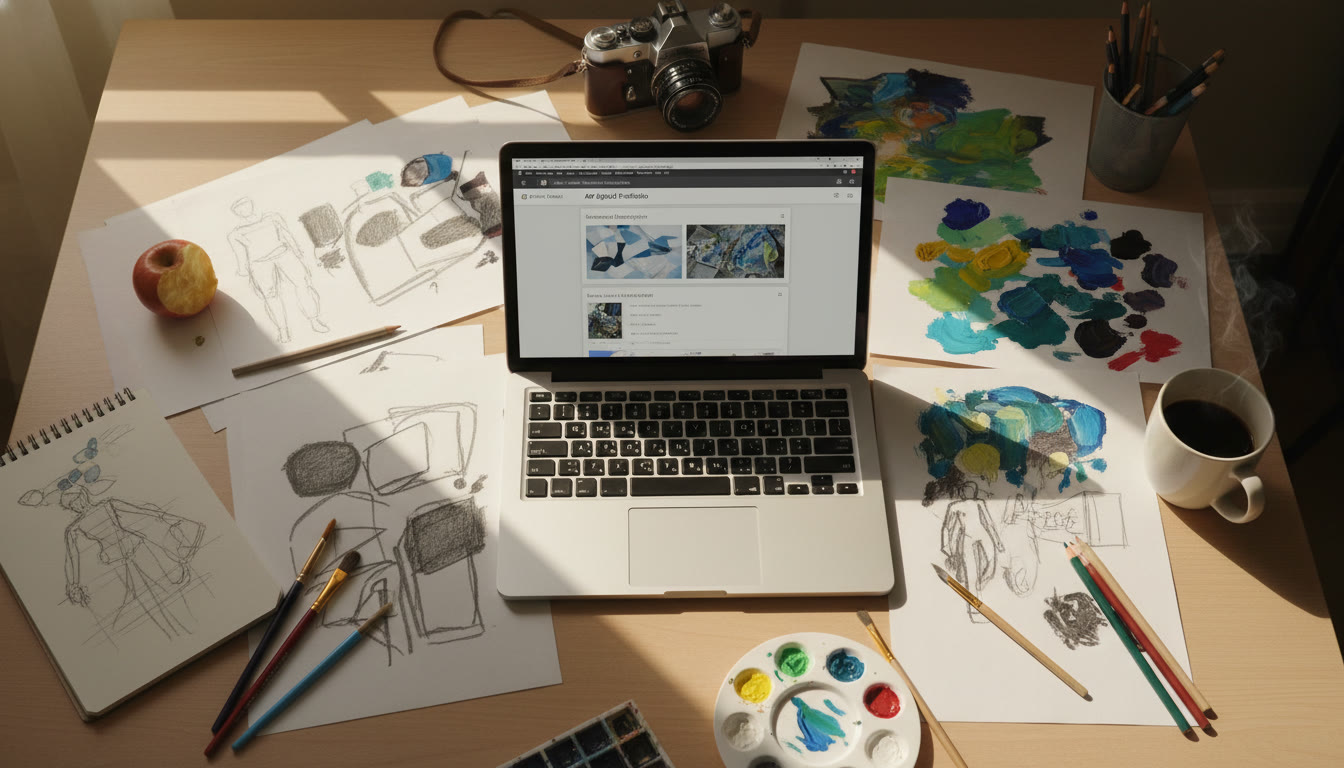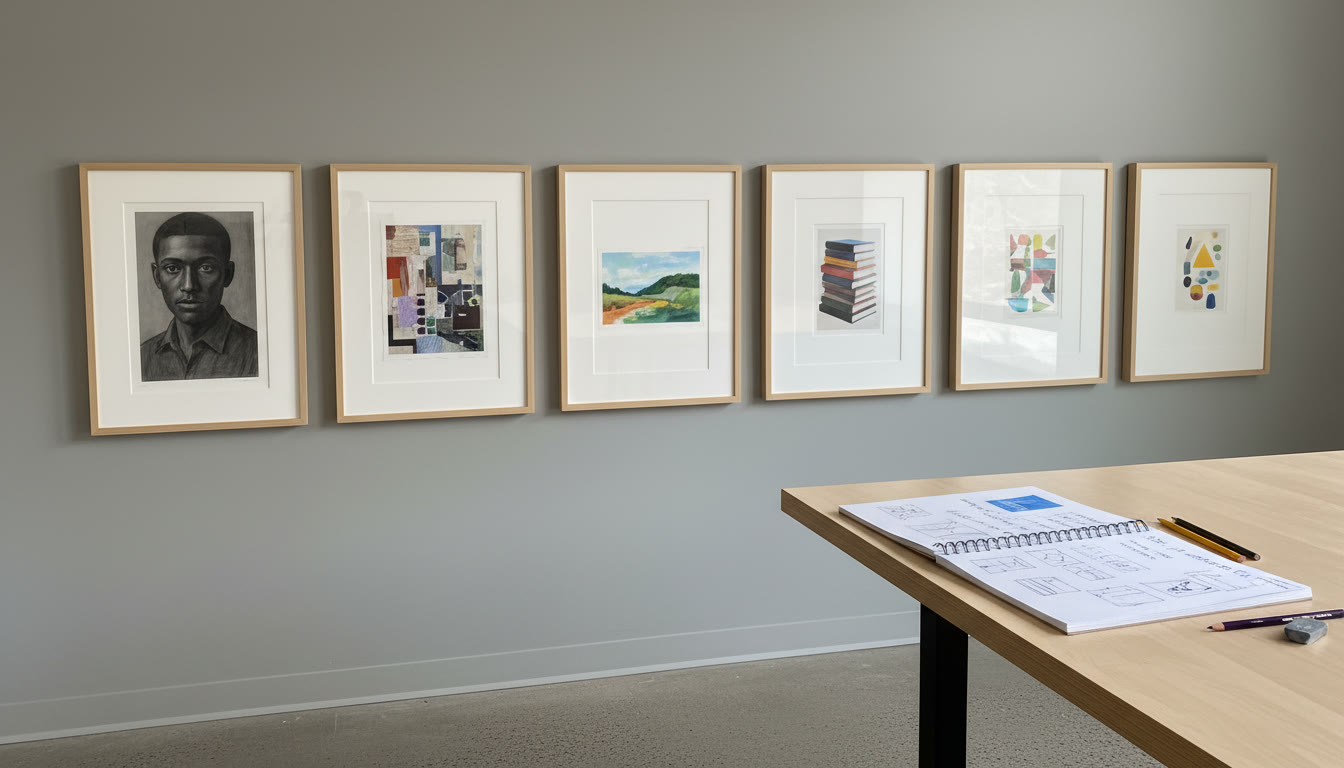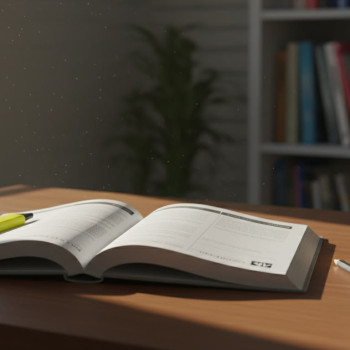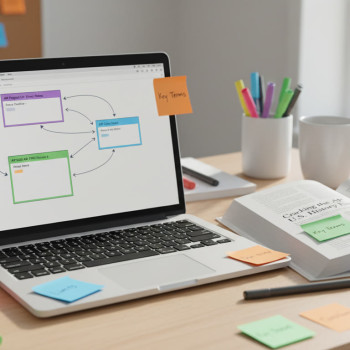Why This Guide Matters: The Portfolio That Tells Your Story
If you’re preparing an AP 2‑D Art and Design portfolio, you’re not only showing technical skill — you’re telling a story about how you think, explore, and grow as an artist. The portfolio has two big parts: the Sustained Investigation (60% of your score) and the Selected Works (40% of your score). Understanding the differences — and how they can complement each other — will make the difference between an okay submission and one that truly sings.

Quick Overview: What Each Section Is Asking For
Think of the Sustained Investigation as a mini‑research project — a focused inquiry you pursue through many pieces, experiments, and written reflection. The Selected Works asks you to pick the five strongest works that demonstrate skillful synthesis of materials, processes, and ideas. They can overlap, but they serve different assessment goals.
Section Deep Dive: Sustained Investigation
What It Is
Sustained Investigation is a coherent body of work centered on an inquiry — a question, a theme, or a problem you investigate over time. You submit up to 15 images that together show development: early experiments, process shots, revisions, and finished pieces. The written evidence explains the inquiry and documents how your investigation developed through practice and experimentation.
What Evaluators Look For
- Sustained inquiry — you must show that your investigation is purposeful and spans a meaningful arc.
- Practice, experimentation, and revision — include sketches, prototypes, or process photos that show how ideas changed.
- Synthesis of materials, processes, and ideas — your work should combine technique and concept consistently.
- 2‑D skills — composition, color, value, space, line, texture, and the principles of design should be evident.
How to Plan a Strong Sustained Investigation
Start with a focused inquiry statement. This is not a thesis that you write neatly at the end — it’s a compass that guides daily choices.
- Pick a compelling question: “How can patterns of urban signage inform a personal visual language?” or “What happens when I translate sound into geometry?”
- Set milestones: research, small experiments, midterm revision, and final pieces.
- Document everything. A single photo of a sketchbook page, a photo of a test print, or a cell showing color exploration can be scored as evidence of development.
- Be intentional about media choices: show why a photographic approach, collage, or printmaking matters to your inquiry.
Examples of Strong Sustained Investigations (Short Illustrations)
- Inquiry: “Memory and Fragments” — early pages: torn paper collages; middle: scanned and remixed fragments; later: large‑format photomontages combining scanned textures with hand drawing. Written evidence documents how layering and scale choices evolved.
- Inquiry: “Light as Structure” — experiments with shadows, cyanotype prints, and digital composites; process images show test exposures and compositional sketches; final pieces synthesize analog and digital processes.
Section Deep Dive: Selected Works
What It Is
The Selected Works section asks you to present five finished works that best demonstrate your 2‑D art and design skills and your ability to synthesize materials, processes, and ideas. Each work gets a short written description where you name materials, processes, and the ideas visually evident in the piece. These pieces can come from your Sustained Investigation, but they don’t have to.
What Evaluators Look For
- Evidence of skillful synthesis — the pieces should show a confident use of materials and processes that reinforce your concept.
- Clarity in the descriptions — succinct, clear statements about materials/processes and idea help readers immediately grasp what you did and why.
- Range or focus — a balanced Selected Works can either show the breadth of your capabilities or a focused, in‑depth mastery of a particular approach.
Choosing Your Five
Choosing Selected Works is as much a curatorial act as a creative one. Consider these strategies:
- Best of Breadth: Pick five works that together show technical range — photography, collage, digital manipulation, painting.
- Best of Depth: Choose five pieces that explore one concept in increasing complexity — this shows depth and sustained focus.
- Combination: Three related works and two that show complementary strengths — a hybrid approach that demonstrates both coherence and skill.
How the Two Sections Work Together
Think of the Sustained Investigation as the heart and the Selected Works as the showcase. A strong portfolio uses both strategically: your Sustained Investigation shows growth, process, and conceptual development; your Selected Works amplify your best, most polished outcomes.
Overlap vs Separation: When to Duplicate Works
Yes, you can include a Selected Work in your Sustained Investigation, but don’t duplicate simply to fill slots. If a Selected Work is a clear capstone of your investigation, including it in both places is logical — it demonstrates both the final outcome and the developmental path. However, you can also choose nonoverlapping work to demonstrate breadth.
Practical Step‑By‑Step Timeline
Plan across the school year — here’s a practical checklist that moves from inquiry to submission.
| Timeframe | Focus | Action Items |
|---|---|---|
| Early Semester | Define Inquiry | Write the inquiry statement; collect references; test initial media and make small experiments. |
| Mid Semester | Refine Process | Keep documenting experiments, choose a direction, start larger works; photo document steps. |
| Late Semester | Develop Final Pieces | Complete pieces for Selected Works; photograph final outputs; revise Sustained Investigation images. |
| Submission Window | Finalize and Upload | Edit images, write concise materials/processes/ideas text for Selected Works; write Sustained Investigation written evidence; submit to AP Digital Portfolio. |
Tips for Process Documentation
- Take consistent, well‑lit photos — evaluators rely on images; good lighting and cropping matter.
- Include process images that show meaningful change: a test print a week before, a sketch that led to a compositional shift, a photo of a failed experiment that helped you pivot.
- Caption process images thoughtfully in your written evidence: explain what you learned and how it changed the work.
How Work Is Scored — A Student’s Translation
Portfolios are scored by trained AP readers who evaluate each section separately and then compute an overall score on a 5‑point scale. Here’s a practical translation of what the scoring rubrics value (in student language):
- Clarity of inquiry and development: Show you weren’t just making random things — you had a question and you tested it.
- Evidence of growth: Include early experiments, messy attempts, and the revisions that made things better.
- Skillful synthesis: Don’t just show pretty work — show that you can combine concept and technique in smart ways.
- Technical craft: Composition, image quality, and intentional material choices are noticed and rewarded.
Common Mistakes and How to Avoid Them
- Too broad an inquiry: “Everything about identity” rarely reads as focused. Narrow it: “Identity expressed through hand‑printed surfaces and found textiles.”
- Poor process documentation: Random photos without explanation don’t show development. Pair process images with short notes about what changed.
- Inconsistent image quality: Blurry or poorly lit images hurt your presentation. Re‑photograph if needed.
- Last‑minute curation: Don’t rush your selections. Curate thoughtfully with time for revisions.
Examples of Strong Written Evidence Language
Keep written responses clear, direct, and tied to visual evidence. You don’t need flowery language — just honest explanation that links choices to the work.
- “Inquiry: To explore the visual language of public notices. I photographed signage, reduced forms to shapes, and experimented with high contrast lithography to emphasize legibility and decay. Tests in February led me to shift from digital collage to layered screen printing for a richer texture.”
- “Materials/Processes: Photographic collage, inkjet print base, overpainting with acrylic gel; idea: reconciling memory with public architecture. The layering emphasizes sedimented histories.”
How to Use Feedback Effectively
Feedback is gold, but you need to use it intentionally. Ask peers and teachers to identify one compositional fix and one concept suggestion for each piece. Then do small, targeted revisions that make a measurable difference.
Sparkl’s Personalized Support — Where It Fits Naturally
If you find yourself needing one‑on‑one guidance, consider a structured tutoring approach. Personalized tutoring can help you refine your inquiry, plan experiments, and practice revision strategies. Services that offer tailored study plans, expert art tutors, and AI‑driven insights can accelerate progress — for example, Sparkl’s personalized tutoring pairs students with experienced studio art educators who help with project planning, image selection, and presentation skills. That kind of focused support is especially helpful when you’re deciding which works belong in Selected Works or how to frame your Sustained Investigation written evidence.
Image and File Prep for the AP Digital Portfolio
Technical details are boring but crucial. The AP Digital Portfolio has formatting requirements; follow them closely so the viewer sees your work, not technical errors.
- Use high‑resolution photos but keep file sizes within the platform limits.
- Crop consistently and present the work in the best possible view; include a detail or scale shot when size or texture is important.
- Label images and provide concise materials/processes descriptions for Selected Works — these character limits matter.
Curating Like a Pro: Order, Rhythm, and Narrative
How you order images affects how the narrative reads. For Sustained Investigation, arrange images to show progression: early experiments first, then development, then resolved pieces. For Selected Works, consider starting with a standout piece, then alternate to show variety or build a conceptual arc.
Mini‑Checklist Before You Submit
- All 15 Sustained Investigation images uploaded and sequenced to tell a clear developmental story.
- Concise written evidence that names the inquiry and explains key developments.
- Five Selected Works uploaded with clear materials/processes/ideas text.
- All images are sharp, well‑lit, and correctly cropped.
- You saved and reviewed everything at least twice, and met your teacher’s internal deadline.

Real‑World Context: Why Colleges Care
College admissions and portfolio reviews look for thinkers who practice: students who can show a process and a capacity to refine ideas are often better prepared for studio and design programs. The Sustained Investigation signals that you can engage in long‑term projects; the Selected Works show your polished, portfolio‑ready results.
Final Words — Make It Yours
This portfolio isn’t an obstacle — it’s a chance to present the part of you that thinks visually. Be honest about your process, curate bravely, and invest time in clear documentation. Use critique wisely, and if you need extra structure, consider targeted one‑on‑one tutoring that helps you plan work, revise effectively, and present with confidence. With a thoughtful Sustained Investigation and carefully chosen Selected Works, you’ll give AP readers a clear picture of your artistic voice and your ability to grow.
Parting Practical Tip
Start photographing work from day one. Even a single phone photo of an initial sketch can become a decisive piece of evidence showing your development. That small habit will save you stress later and strengthen your portfolio narrative.
Good luck — and enjoy the process. Your portfolio is a map of your creative curiosity; make sure it shows not only where you ended up, but how you got there.




















No Comments
Leave a comment Cancel